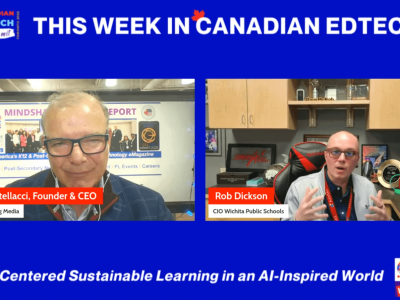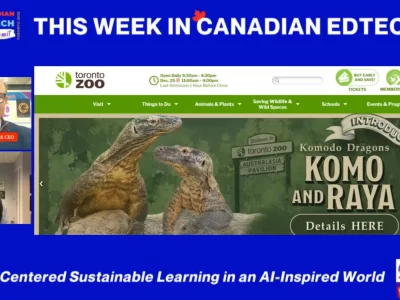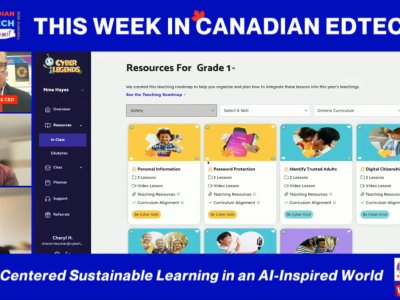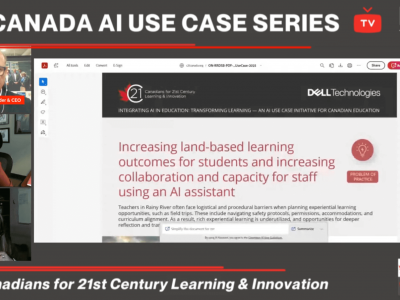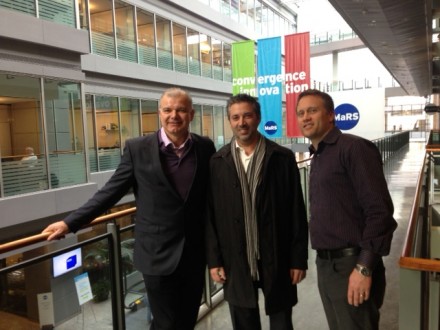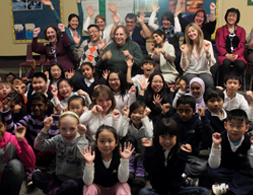I’ve used this space before to discuss the importance of re-inventing your library and making it into a School Library Learning Commons. In fact, my school is beginning the journey; we are taking our current space which is currently anchored in ‘yesteryear’ and moving it forward into a 21st Century School Library Learning Commons. Over the next number of months, I will lead you through our journey and the steps we will take to make the transformation from the current model to something more modern that meets the needs of today’s students and staff.
But first of all, let me quickly re-visit the reasons why it makes sense to transform current libraries into library learning commons. Firstly, to give this ‘movement’ context I think it makes sense to think about the way the world is changing and the way schools are moving out of narrow, siloed classrooms into dynamic, collaborative spaces where students and teachers work together to construct deep knowledge working in real-world scenarios with real-world issues and problems. Further, we are no longer engaged solely in the simple literacies that every teacher had come to appreciate, but rather we are now working in a world where multi-literacies are the new order. Teachers are now expected to be able to help students understand, appreciate and ‘digest’ the various literacies that command and demand attention. Where then does the teacher go for resources and the support necessary to augment their teaching practice? Where do the students go to access theses literacies and to acquire the digital resources they’ll need to make sense of this brave new world?
From the very brief description of the reality of today’s classroom you can begin to appreciate that the library as we once new it can no longer exist. We must begin to transform our libraries so that they become dynamic hubs of learning where ideas are born, curiosity is sparked and digital frontiers are explored using the right tools and resources with the collaborative support of qualified staff members. The library becomes a place where both physical and virtual spaces are renewed and students can explore either collaboratively, or on their own. They can do this in spaces that suit their needs whether they’re quiet work areas or dynamic spaces where they can use digital tools to explore, investigate, process and create.
We should understand that there is a learning revolution underway. As Michael Fullan so aptly states in this latest work, Coherence:
“There is a learning revolution under way because of the confluence of forces. These forces are urgency, knowledge, and capacity. The urgency evolves from the allure of a dynamic, fast-paced, multimedia global world competing with traditional schooling that has not changed much in 50 years. This creates a push-pull dynamic. The push factor is that schools are increasingly boring for students and alienating for teachers…The pull factor is that innovations in the digital world are alluring, omnipresent, and accessible outside the walls of the school (alluring but not necessarily productive. “ (Fullan, 2016)
This learning revolution then calls for a different dynamic in schools where ‘boredom’ and
‘alienation’ are addressed using digital materials that are presented in sound pedagogical ways. The focus then becomes developing deeper learners who are mired in the context of learning systems that engage them and excite them because of the proper and cogent use of today’s tools. This cannot happen without having a center; a place where this can converge and where students and staff can gather to find exciting ideas, or where these ideas can be explored using different digital tools. This place or this center, I believe, is the School Library Learning Commons. This is not to say that the classroom is displaced but rather it is enhanced, and fed by the dynamic and the resources found in the learning commons. There is no ‘one space’ that can make a school a more effective learning space. I think however that the school can have a place that strongly influences and pushes the learning agenda so as to truly become the idea center that drives more effective pedagogies through the use of digital tools, and a place where staff and school capacity are deepened. I believe this place is the School Library Learning Commons.
We know that complex knowledge construction happens in contexts where learners are engaged in topics of interest, working with teachers who are co-learners, and where higher order thinking skills are engaged. Where can this best be modeled in the local school? Where can both students and teachers go to experience complex knowledge construction using the enhancing power of new technologies? Where can teachers experiment and try out new ideas and sharpen their pedagogical toolkit; a toolkit that includes a deep understanding that pedagogy leads technology and where this synergy exists there’s a powerful elixir of excitement that creates new learning environments and opportunities? Again, the answer I believe is the School Library Learning Commons.
Think of this new space as a catalyst of sorts. It becomes the heart of the learning village; it becomes the place where ideas are found, ‘played with’ and presented in due course in classroom contexts. The School Library Learning Commons is this catalyst and it can become a place where local collaboration can lead to global collaboration. It becomes the ‘testing ground’ for bigger and better things. We know the world is changing but unless we change with this world we will be creating students who will feel alien and unsuited to what awaits them in the world beyond. We must create an opportunity for them to experiment, explore and investigate in safe places so that they can develop the deeper critical thinking skills that the world will need, and the collaborative experiences that will serve them in different contexts, especially as the world becomes smaller and smaller and more connected than ever.
At some point in the future we will have people from different disciplines convening together to discuss complex problems from many different angles attempting to provide solutions that are global in scope. This will require people skilled in the art of communication, and the ability to collaborate effectively and creatively. Again, where can these skills be developed, taught and sustained? We cannot afford to begin this process later in a student’s school cycle. It must begin early and it must be sustained from early years until the end of high school and beyond. Where can this begin? I think by this point in this short piece you already know the answer.
Why the School Library Learning Commons? I have briefly shared some of the reasons why I believe we should be transforming our current library spaces into these dynamic hubs. There are many more reasons. I hope as I share our experiences in developing our library space into a School Library Learning Commons you can travel down the road with us and gain some appreciation for the challenges, struggles and successes of building a new space with a broader vision of what a dynamic school community can become with the help of our School Library Learning Commons.
Fullan, Michael and Joanne Quin. Coherence: The Right Drivers in Action for Schools, Districts, and Systems. Thousand Oaks: Corwin, 2016.
